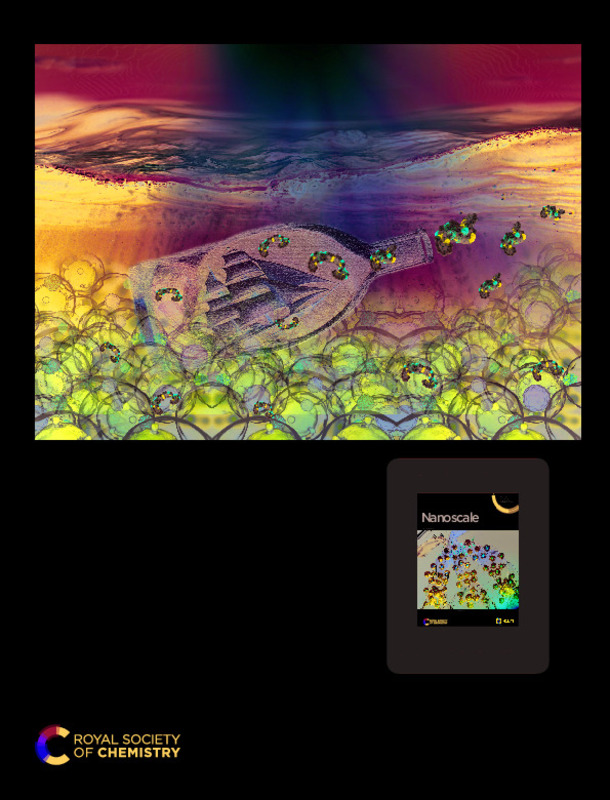JavaScript is disabled for your browser. Some features of this site may not work without it.
Buscar en RiuNet
Listar
Mi cuenta
Estadísticas
Ayuda RiuNet
Admin. UPV
Light-activated controlled release of camptothecin by engineering porous materials: the ship in a bottle concept in drug delivery
Mostrar el registro sencillo del ítem
Ficheros en el ítem
| dc.contributor.author | Rivero-Buceta, Eva María
|
es_ES |
| dc.contributor.author | Encheva, Mirela E.
|
es_ES |
| dc.contributor.author | Cech, Bradley
|
es_ES |
| dc.contributor.author | Fernández, Eduardo
|
es_ES |
| dc.contributor.author | SASTRE NAVARRO, GERMAN IGNACIO
|
es_ES |
| dc.contributor.author | Landry, Christopher C.
|
es_ES |
| dc.contributor.author | BOTELLA ASUNCION, PABLO
|
es_ES |
| dc.date.accessioned | 2024-04-29T18:08:22Z | |
| dc.date.available | 2024-04-29T18:08:22Z | |
| dc.date.issued | 2023-08-03 | es_ES |
| dc.identifier.issn | 2040-3364 | es_ES |
| dc.identifier.uri | http://hdl.handle.net/10251/203842 | |
| dc.description.abstract | [EN] Many systems for controlled drug release have been developed using different types of nanoparticles modified with azobenzene moieties. In these systems, drug release is often triggered by UV irradiation (either direct or using a near-infrared photosensitizer). These drug delivery systems often face challenges to their use, such as their lack of stability in physiological environments and concerns about their toxicity and bioavailability, that have hindered their translation from pre-clinical studies to clinical trials. Here, we propose a conceptual change by shifting photoswitching activity from the vehicle (nanoparticle) to the load (drug). In this "ship in a bottle" concept, the molecule to be delivered is trapped within a porous nanoparticle and its release is accomplished through a photoisomerization process. Using molecular dynamics, we designed and synthesized a photoswitchable prodrug of the antitumor drug camptothecin that contains an azobenzene functionality, and we have prepared porous silica nanoparticles with pore diameters designed to limit its release when in the trans form. Molecular modelling was used to show that the cis isomer was smaller and better able to pass through the pores than the trans isomer, which was confirmed by stochastic optical reconstruction microscopy (STORM). Thus, prodrug-loaded nanoparticles were prepared by loading the cis prodrug and then using UV irradiation to convert cis to trans isomers, trapping them, within the pores. Release of the prodrug was then accomplished by using a different UV wavelength to convert trans isomers back to cis. In this way, prodrug encapsulation and release could be achieved "on demand" through controlled cis-trans photoisomerization, which allowed the prodrug to be delivered safely and its release to be triggered precisely at the region of interest. Finally, the intracellular release and cytotoxic activity of this novel drug delivery system has been validated in several human cell lines, confirming the ability of this system to accurately control the release of the camptothecin prodrug. | es_ES |
| dc.description.sponsorship | This work was supported by the Spanish Ministry of Science and Innovation (grant number PID2019-111436RB-C21). The authors also acknowledge the Microscopy Imaging Center at the University of Vermont and Dr Victoria Moreno (Centro de Investigacion Principe Felipe, Valencia, Spain) for her technical support in the in vitro studies. | es_ES |
| dc.language | Inglés | es_ES |
| dc.publisher | The Royal Society of Chemistry | es_ES |
| dc.relation.ispartof | Nanoscale | es_ES |
| dc.rights | Reconocimiento (by) | es_ES |
| dc.title | Light-activated controlled release of camptothecin by engineering porous materials: the ship in a bottle concept in drug delivery | es_ES |
| dc.type | Artículo | es_ES |
| dc.identifier.doi | 10.1039/d3nr00642e | es_ES |
| dc.relation.projectID | info:eu-repo/grantAgreement/AEI/Plan Estatal de Investigación Científica y Técnica y de Innovación 2017-2020/PID2019-111436RB-C21/ES/IMAGEN FOTOACUSTICA CON NANOPARTICUTLAS CON PROPIEDADES OPTOELECTRONICAS Y MAGNETICAS/ | es_ES |
| dc.rights.accessRights | Abierto | es_ES |
| dc.description.bibliographicCitation | Rivero-Buceta, EM.; Encheva, ME.; Cech, B.; Fernández, E.; Sastre Navarro, GI.; Landry, CC.; Botella Asuncion, P. (2023). Light-activated controlled release of camptothecin by engineering porous materials: the ship in a bottle concept in drug delivery. Nanoscale. 15(30):12506-12517. https://doi.org/10.1039/d3nr00642e | es_ES |
| dc.description.accrualMethod | S | es_ES |
| dc.relation.publisherversion | https://doi.org/10.1039/d3nr00642e | es_ES |
| dc.description.upvformatpinicio | 12506 | es_ES |
| dc.description.upvformatpfin | 12517 | es_ES |
| dc.type.version | info:eu-repo/semantics/publishedVersion | es_ES |
| dc.description.volume | 15 | es_ES |
| dc.description.issue | 30 | es_ES |
| dc.identifier.pmid | 37282587 | es_ES |
| dc.relation.pasarela | S\510670 | es_ES |
| dc.contributor.funder | Agencia Estatal de Investigación | es_ES |
| dc.contributor.funder | Universitat Politècnica de València |








